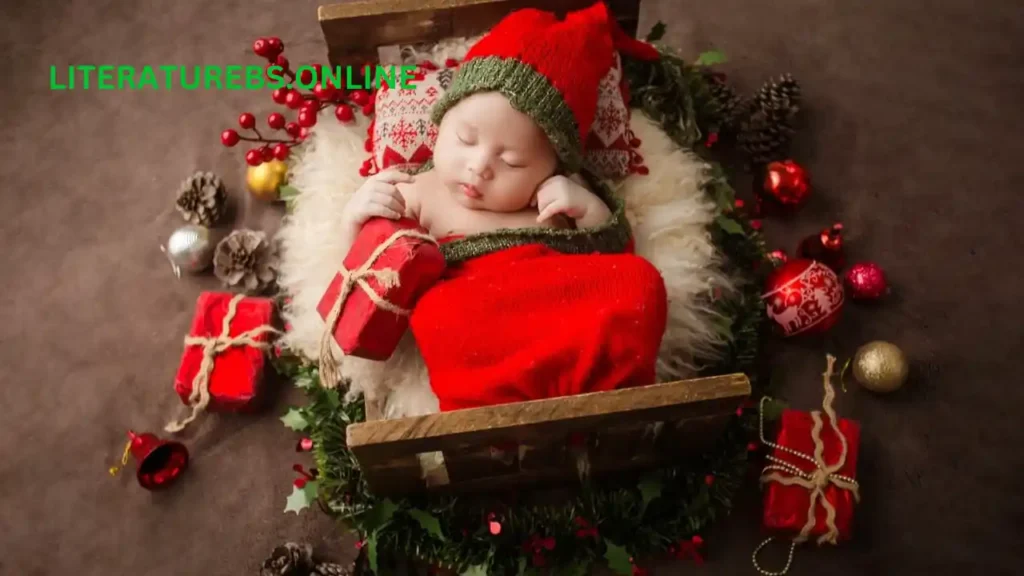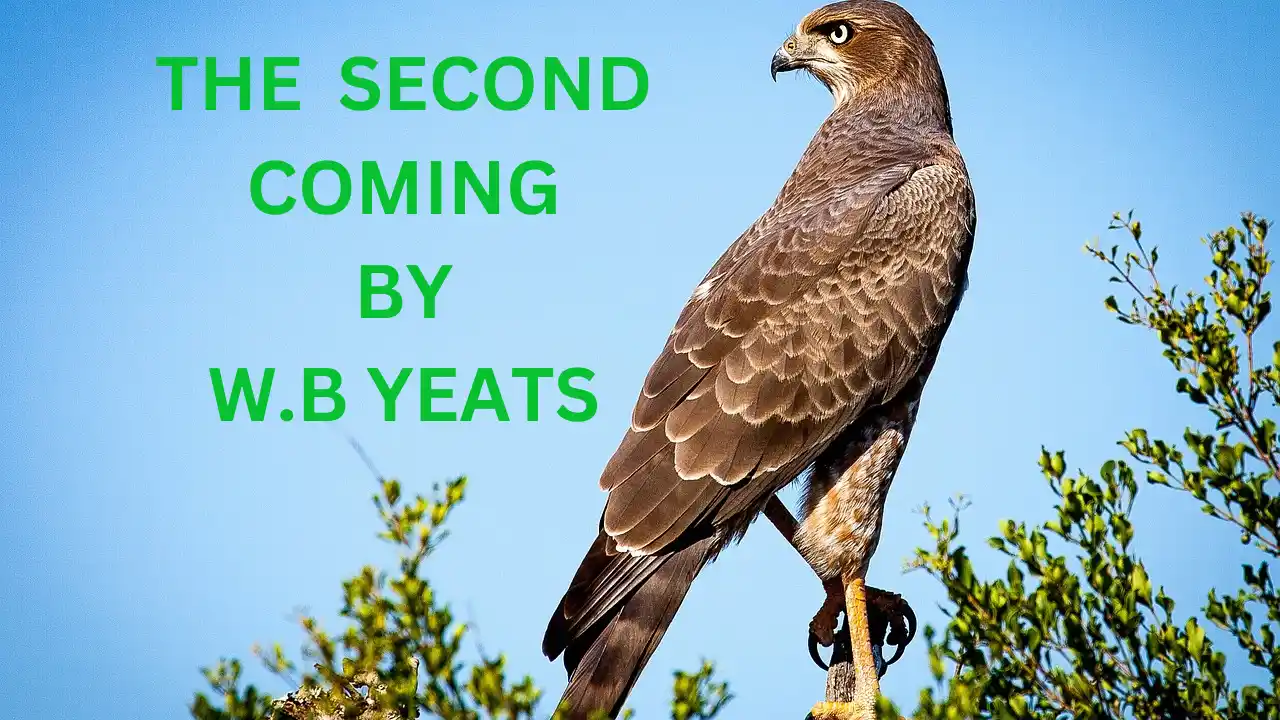By Willam Buttler Yeats
Introduction to the poem: The Second Coming
In 1919, W.B. Yeats, a famous Irish poet, wrote a powerful poem called “The Second Coming.” This poem is considered one of the most important works of modernist poetry. It was first published in The Dial in November 1920 and later included in Yeats’ 1921 collection “Michael Robartes and the Dancer.” “This poem reflects the turbulent atmosphere in Europe after World War I, using Christian imagery to convey its message.
Unlike traditional Christian beliefs about Jesus’ return bringing redemption, Yeats paints a bleak picture of societal decay and unrest. The aftermath of World War I left Europe in chaos, and Yeats captures this feeling in the poem’s first stanza. He describes a world filled with confusion and despair. Yeats presents a haunting vision of the Second Coming in the following stanza, portraying it as a terrifying beast.
Historical Context:
“The Second Coming” by W.B. Yeats is deeply connected to the turbulent history of the early 20th century. Written in 1919, amidst the aftermath of World War I and the Irish War of Independence, Yeats penned this poem during a time of immense change.
The aftermath of World War I left a profound impact, with widespread destruction and loss. People felt lost and uncertain as they tried to rebuild their lives and nations. Additionally, Yeats delves into the idea of history repeating in cycles, a belief he explored in his book “A Vision.” He suggests that a new era is on the horizon, symbolized by a mysterious figure moving towards Bethlehem.
The poem also reflects the turmoil of other significant events of the time, such as the Russian Revolution and the Easter Rebellions in Ireland. These events added to the sense of upheaval and uncertainty that permeated society.
Furthermore, the poem was written during the 1918-1919 flu pandemic, which claimed millions of lives globally. Yeats and his wife were affected by this pandemic, heightening the fear and uncertainty portrayed in the poem.
Full Text of “The Second Coming”
Stanza 01: Explanation
Turning and turning in the widening gyre
The falcon cannot hear the falconer;
Things fall apart; the center cannot hold;
Mere anarchy is loosed upon the world,
The blood-dimmed tide is loosed, and everywhere
The ceremony of innocence is drowned;
The best lack all conviction, while the worst
Are full of passionate intensity.
The poem begins with a striking image of a falcon trapped in a spinning motion, unable to heed its owner’s call. This imagery symbolizes the sense of confusion and aimlessness felt by people as if they’ve lost their way. Yeats declares, “Things fall apart; the center cannot hold.” This line suggests that the very foundation of society is crumbling, leading to a state of instability and chaos. It’s like everything is unraveling, and there’s no solid ground to stand on.
The mention of a “blood-dimmed tide” evokes a sense of widespread violence and destruction, likening it to a flood of blood washing over everything in its path. This imagery underscores the pervasive nature of the chaos, where even innocence is not spared from its grasp. Yeats contrasts the passivity of the virtuous with the fervor of the wicked. The good people, represented by their quietness, seem unable or unwilling to take action, while the bad ones are depicted as being filled with intense energy and passion.
“The falcon cannot hear the falconer; Things fall apart; the center cannot hold.” – W.B. Yeats
Stanza 02: Explanation
Surely some revelation is at hand;
Surely the Second Coming is at hand.
The Second Coming! Hardly are those words out
When a vast image out of Spiritus Mundi
Troubles my sight: somewhere in the sands of the desert
A shape with a lion’s body and the head of a man,
A gaze blank and pitiless as the sun,
Is moving its slow thighs, while all about it
Reel shadows of the indignant desert birds.
The darkness drops again, but now I know
That twenty centuries of stony sleep
Were vexed to nightmare by a rocking cradle,
And what rough beast, its hour come round at last,
Slouches towards Bethlehem to be born?

In the second part of the poem, W.B. Yeats explores the idea of something big about to happen, like the Second Coming. The speaker feels certain that something important is going to happen soon, which is emphasized by repeating the word “Surely.”
But then, the speaker describes a strange vision seen through Spiritus Mundi, the world spirit. It’s like a deserted desert where a creature appears. This creature has a mix of a lion’s body and a human head(Referring to the Sphinx, a creature in Greek Mythology), showing both power and intelligence, Its face is described as emotionless, like the sun, which makes it seem scary and uncaring. Birds fly around it in a disturbed way, making the scene even creepier.
After the vision fades, the speaker realizes that a long period of quietness has ended. It’s like something big is about to change. The speaker ends with a mysterious question about a rough beast heading to Bethlehem, leaving readers to wonder what it all means. Through these vivid descriptions and hidden meanings, Yeats makes us think about history and how things keep repeating in strange ways.

Those who failed to answer correctly would be devoured by the Sphinx. Oedipus successfully solved her enigma, resulting in downfall she threw herself from the rock.
The Sphinx represents mystery and the difficulty of unraveling complex puzzles, serving as a guardian at the boundary between familiarity and uncertainty, and enduring as a timeless symbol of wisdom.
“Is moving its slow thighs, while all about it Reel shadows of the indignant desert birds.” – W.B. Yeats
The Second Coming: Themes
Apocalypse:
In religious contexts, the apocalypse typically involves divine intervention, judgment, and the ultimate triumph of good over evil. In Christian theology, the Book of Revelation in the New Testament of the Bible is often referred to as the Apocalypse. It describes a series of visions received by the apostle John, depicting the end times and the final battle between the forces of good and evil. The word “apocalypse” itself comes from the Greek word “apokalypsis,” meaning “unveiling” or “revelation,” reflecting the unveiling of hidden truths about the future.
In W.B. Yeats’ “The Second Coming,” the idea of a big, scary change is shown through strong pictures. It’s like the world is on the edge of something really big happening, where everything we know is falling apart. Yeats captures this feeling with the famous line “Things fall apart,” showing how society is breaking down. He also talks about a “rough beast” moving towards Bethlehem, which sounds scary and makes us think of bad things coming. This connects to the poem’s idea that history goes in circles, with old ways giving way to new ones. “The Second Coming” makes us think about a world where everything is uncertain and chaotic, and it’s kind of scary.
Order and Disorder:
In this poem ” there’s a big focus on the idea of order and disorder, which means things being neat and organized or messy and chaotic. Right from the start, Yeats talks about how “things fall apart; the center cannot hold,” showing how things are breaking down and getting out of control. He uses strong images, like a falcon not listening to its owner, to show how the natural order is being disrupted, and everything feels chaotic.
Throughout the poem, Yeats paints a picture of a world on the edge of collapse. He talks about a “blood-dimmed tide” and a scary “rough beast” heading toward Bethlehem, making us feel like something really bad is about to happen. These images represent chaos and destruction, showing how everything is falling apart.
But the poem also touches on the idea that history repeats itself in cycles. Yeats believes that after chaos comes order again, and then chaos again, in an endless loop. This idea of things constantly changing reflects the theme of order and disorder in the poem, showing how stability can’t last forever.
Good VS Evil:
In this poem the battle between good and evil takes center stage, painted with vivid pictures and strong contrasts, showing a world where right and wrong aren’t always clear.
The poem shows a society in chaos, where those who should stand for good lack the courage to act, while the wicked are full of energy and passion. This contrast between the weak and the wicked highlights the ongoing fight between light and darkness, between what’s right and what’s wrong. The famous line “the best lack all conviction, while the worst are full of passionate intensity” sums up this struggle, showing how complex morality can be.
Yeats also uses powerful symbols to talk about good and evil. He talks about a “blood-dimmed tide” and a scary “rough beast” heading towards Bethlehem, painting a picture of a world about to be swallowed by evil. These images remind us of the constant danger posed by darkness, lurking around us all the time.
But the poem also brings up questions about divine intervention and justice. The idea of the “Second Coming” hints at the hope for redemption and the triumph of good over evil. Yet, there’s a sense of uncertainty, leaving us to wonder about the mysteries of life and whether justice will prevail.
Society and Class:
In this poem, W.B. Yeats talks about how society is changing after World War I. The poem shows a world where things are falling apart, and nobody seems to have control anymore. Yeats uses the image of a falcon not listening to its owner to show how society has lost its direction.
The poem also talks about differences between people in society. It says that even though the “best” people lack courage, the “worst” ones are full of energy. This shows how society can be unfair, with some people having more power and privilege than others.
The imagery of a “blood-dimmed tide” and a scary “rough beast” heading toward Bethlehem makes us feel like something really bad is about to happen. This shows how fragile society can be when faced with outside threats and internal divisions. It shows us the tension between stability and change, and how people struggle for power in a world full of uncertainty and chaos.
Versions of Reality:
In W.B. Yeats’ poem “The Second Coming,” he talks about different ways of seeing the world. The poem starts with a world in chaos, where things we thought were true are falling apart. It’s like a falcon not listening to its owner, showing how reality is changing. Then, the speaker has a strange vision of a “rough beast” heading towards Bethlehem. This vision challenges what we think is real, making us wonder about the line between what’s true and what’s not.
The poem also talks about time and how history repeats itself. It mentions “twenty centuries of stony sleep,” suggesting that past events still affect us today. This idea makes us think about how our understanding of reality is shaped by what happened before. “The Second Coming” makes us question what we believe is real. It challenges us to think about different perspectives and how our understanding of reality can change over time.
Final Thoughts:
In conclusion, “The Second Coming” stands as a timeless masterpiece of modernist poetry, offering a haunting and unforgettable meditation on the complexities of the human experience. It reminds us of the fragility of order, the pervasive presence of evil, and the enduring quest for meaning in a world fraught with uncertainty. Through its enduring relevance and profound insights, Yeats’ poem continues to captivate and inspire readers, inviting us to delve deeper into its mysteries and contemplate the mysteries of existence.
